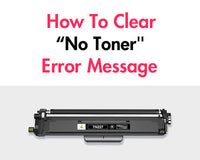A resin printer is a type of 3D printer that uses light to cure liquid resin into solid objects, layer by layer. Resin printing is known for its ability to produce highly detailed and smooth prints, making it ideal for applications in industries such as dentistry, jewelry, and rapid prototyping. In this blog, we will explore the technologies of resin printers, specific operation methods, and the advantages and disadvantages of resin printing. If you are interested in resin printers, please continue to learn more details with us.
Technologies of Resin Printers
In fact, most resin printers are classified by technologies. There are four main technologies of resin printers: stereolithography, digital light processing, liquid crystal display, and continuous liquid interface production. Let’s delve into each of these technologies to understand the fundamental principles behind how resin printers work.
1. Stereolithography (SLA)
Stereolithography is one of the most widely used technologies of 3D printing. It works by exposing a layer of thin photosensitive fluid resin to an ultraviolet(UV) laser beam. When the resin is exposed to UV lasers, it is cured. Then, apply another thin layer of resin and repeat the laser process until a solid 3D printed object is created. In general, the SLA printing process can be top-down, as used in some industrial applications, or bottom-up, like desktop printers.
a. In top-down SLA printing:
·The laser source is located above the vat of resin.
·The build platform starts at a predetermined layer height under the top surface of the liquid resin.
·After curing one layer, the build platform lowers the specified layer height, typically between 25-100 microns, to solidify the next layer and merge it with the previous layer.
·This process repeats until the model is complete. After the task is completed, the build platform automatically rises from the vat.
b. In bottom-up SLA printing:
·The light source is located under the vat, and the model is formed upside down.
· The build platform starts at a predetermined layer height above the bottom surface of the tank, which is transparent to allow light to penetrate the liquid resin.
·After each layer has solidified, the build platform rises to remove the cured resin from the bottom of the tank through a process called “peeling”.
SLA is known for its high precision and smooth finish, ideal for applications that require intricate details, but it is slow and expensive.
2. Digital Light Processing (DLP)
Digital light processing is also among the most popular resin 3D printing methods. DLP printing is similar to bottom-up SLA printing in that the light source is positioned below the vat of resin.
·The build platform is placed below the vat of resin and lowers itself into the resin.
·However, instead of using a UV laser, DLP printing uses a projector screen to flash a pixelated 2D image of the layer onto the bottom of the vat.
·As each layer is printed, the build platform moves up a layer.
·Repeat this process until the print job is complete.
DLP printing can achieve faster processing times than SLA printing. But the shortage of DLP printing is that the build accuracy depends on the pixel size.
3. Liquid Crystal Display (LCD)
Liquid crystal display, sometimes known as masked stereolithography (mSLA), uses a bottom-up printing method.
·The printer’s build platform is submerged in a vat of liquid resin.
·An array of UV LEDs beneath the LCD screen emits light.
·The LCD screen acts as a dynamic mask, selectively blocking or allowing light to pass through each layer.
·Areas where light passes through are cured, solidifying the resin.
·After each layer is cured, the build platform moves up, and the process repeats for the next layer.
LCD printing generally uses cheaper components than both SLA and DLP, which is often a good introduction to resin printing for the first-time owner.
4. Continuous Liquid Interface Production(CLIP)
Continuous Liquid Interface Production is a cutting-edge resin printing technology. Unlike other technologies, CLIP uses a continuous flow of resin, allowing the object to be printed in real-time, without the need for layer-by-layer curing. The specific process is as follows:
·The resin is inserted into a flat container.
·A UV light projector below the container uses a previously defined series of images to melt the resin before hardening it into shape.
·A window between the projector and material allows light and air to permeate.
·In a controlled manner, oxygen is released through this window to prevent the liquid resin from hardening too early.
·A molding platform that was lowered into the vat at the beginning of the process is continually raised as the 3D object is manufactured. This upward movement, plus the controlled supply of oxygen, creates a very thin “dead zone”.
·Within this dead zone, oxygen inhibits the photopolymerization reaction, keeping the resin in a liquid state. Resin only solidifies rapidly once it’s pulled out of this dead zone.
·Above the dead zone, the curing part is drawn out of the resin container.
CLIP printing offers the fastest printing with the least amount of visible layer lines, but it is the most expensive among these four technologies and is primarily used for industrial applications.
How Does a Resin Printer Work
After understanding the four different printing technologies, we can further learn about the basic operations of resin printers, including preparation before using, printing process, and post-processing.
1. Preparation
a. Design or select a 3D model:
You can design the model using CAD software or a 3D scanner by yourself, or download the prepared model file from the web.
b. Clean the print platform:
Ensure that the print platform is clean and free from any residue adhering to it. And it can be cleaned with alcohol.
c. Check platform alignment:
Ensure that the printing platform is properly aligned with the resin tank. And many resin printers offer auto-leveling to ensure platform leveling.
2. Printing
a. Transfer the model file:
You need to transfer files to the resin printer via USB, Wi-Fi, etc.
b. Set printing parameters:
Adjust appropriate printing settings based on the model and resin type to ensure that resolution, layer height and other settings meet your needs.
c. Handle resins:
·Wear protective gloves and eye goggles: While fully cured resins are perfectly safe, when the material is in liquid form, it is considered toxic. Wearing protective gloves will ensure your skin is safe from any irritation that may occur if you spill resin on yourself. For the best protection, chemical-resistant nitrile gloves or neoprene gloves are recommended. It is also a good idea to protect yourself in case of any resin splashes.
·Pour resins into the vat: In general, the vat will have a maximum and minimum level mark. Ensure that the resin is filled to the proper level to avoid excessive spillage.
d. Start printing:
Start the printer, and the machine will build the 3D model by curing the resin layer by layer using UV laser or other light sources according to preset parameters.
e. Add support structures:
When printing complex models, it is often necessary to add support structures to support the overhanging sections.
f. Monitor the process:
Keep an eye on the printing process to identify and address issues promptly, such as insufficient resin or support structure failure
3. Post-Processing
a. Cleaning resin prints:
3D printed resin parts need to undergo a cleaning process to remove the sticky uncured resin residue from their surface. There are several different cleaning methods available for resin prints, including specialized cleaning stations sold as 3D printer accessories. However, one of the most common methods is the use of isopropyl alcohol (IPA) baths.
·Simply dip the 3D print into the IPA and stir for about 30 seconds. You can also let the print soak in the IPA solution.
·Continue this process until the sticky resin residue is gone. Usually, two rinses are enough.
b. Remove support structures:
If your printed part was made with support structures, support removal is an important post-processing step.
·After the cleaning process, clip away supports using flush cutters.
·By placing the cutters as close as possible to the print surface, you will minimize the amount of sanding required to ensure a smooth surface finish.
·For supports located at delicate junctures, use tweezers to pry them away carefully.
·If you do need to sand the 3D print to remove support marks, start by using a low-grit sandpaper and gradually transition to finer sandpaper.
c. Post-curing:
Post-curing is a great option when producing functional parts or prototypes that require greater strength.
·Many resin printer manufacturers offer dedicated post-curing stations.
·It is possible to make your post-curing stations using a UV light source and rotating platform.
·It is also possible to post-cure resin prints in the sun.
Advantages of Resin Printing
1. Precision and Accuracy:
Resin prints have good precision and accuracy. The closed build environment makes it almost identical every time. Since light is used instead of heat during the printing process, the temperature of the printing process is comparable to room temperature, so there is no need to worry about thermal expansion and contraction of the print
2. The Smooth Finish:
Resin printing provides a smooth surface due to its fine layer resolution and minimal visible layer lines. The post-curing process eliminates rough textures, resulting in a polished finish. This smoothness makes it ideal for detailed applications such as miniatures, jewelry, and dental models.
3. Watertightness:
Objects that are printed with resin are one piece, even if they have channels inside. This waterproofing capability is important for engineering and manufacturing tasks that involve controlling and predicting the flow of air or fluids. Engineers and designers use resin prints to solve air and fluid flow problems in consumer products such as automotive, biomedical research, and kitchen appliances.
4. Versatility:
Resin printing is incredibly versatile. It is capable of printing with a wide range of resins, including standard, flexible, and even biocompatible resins. This flexibility makes resin printing suitable for a wide range of applications. Additionally, different printing technologies allow for high precision and speed, expanding their applications in different industries.
Disadvantages of Resin Printing
1. High Cost:
Compared to traditional fused deposition modeling (FDM) printing, resin printing is expensive for initial cost and maintenance. This makes resin printing less accessible for casual users or small-scale operations compared to FDM printing.
2. Long Post-Processing Time:
After a print is completed, resin models require significant post-processing. This includes washing the print to remove excess resin, removing support structures and post-cutting.
3. Safety Concerns:
Many liquid resins are toxic and can cause skin irritation or even more serious health problems if not handled properly. As a result, there are some safety issues with resin printing.
Frequently Asked Questions about Resin Printing
1. How to store resins correctly?
Proper storage ensures the quality and longevity of resins. They must be stored in opaque containers, preferably in a dark environment, as resins are sensitive to UV rays. If you need to store resin for a long time, be sure to check the expiration date. While the resin does not “deteriorate”, it loses its photoreactivity over time, which can affect print quality. To extend the life of resins, it is also beneficial to shake the resin container every few weeks to ensure they remain well mixed.
2. Which is better, FDM or resin printers?
It depends on your needs. If you’re looking for a machine that can custom print a wide range of objects, a FDM printer is great. These machines are perfect for printing a wide range of objects and are at a reasonable price. But when it comes to small models and impressive details – such as printing with material transparency, or trying jewelry printing – a resin printer may be a good choice.
Conclusion
Resin printers stand out from other types of printers with their unique printing process. As technology continues to advance, resin printing is likely to evolve further. If you want to know more details about 3D printers, you can read our blogs: How Much Does a 3D Printer Cost and How to Clean 3D Printer Nozzles.












